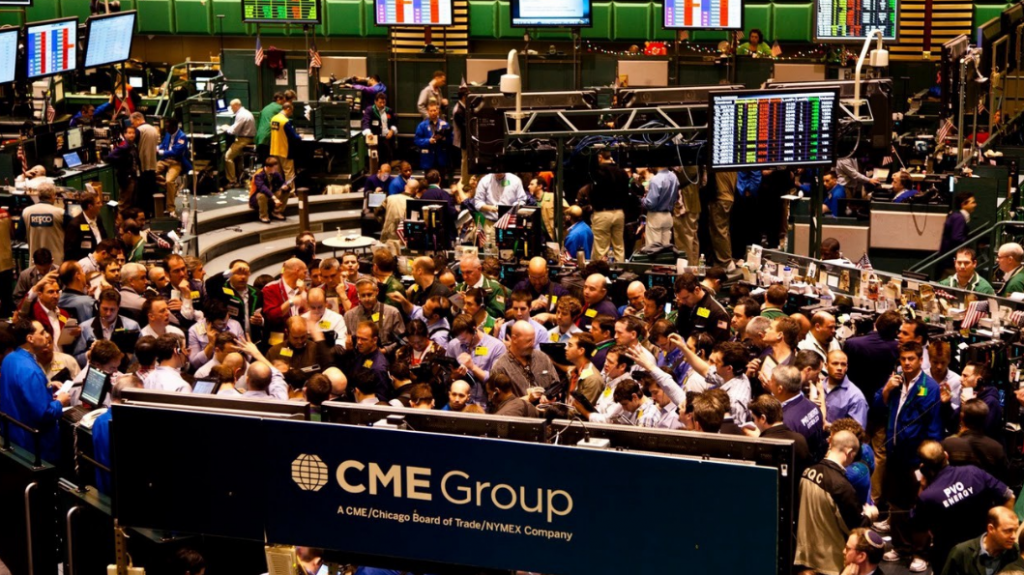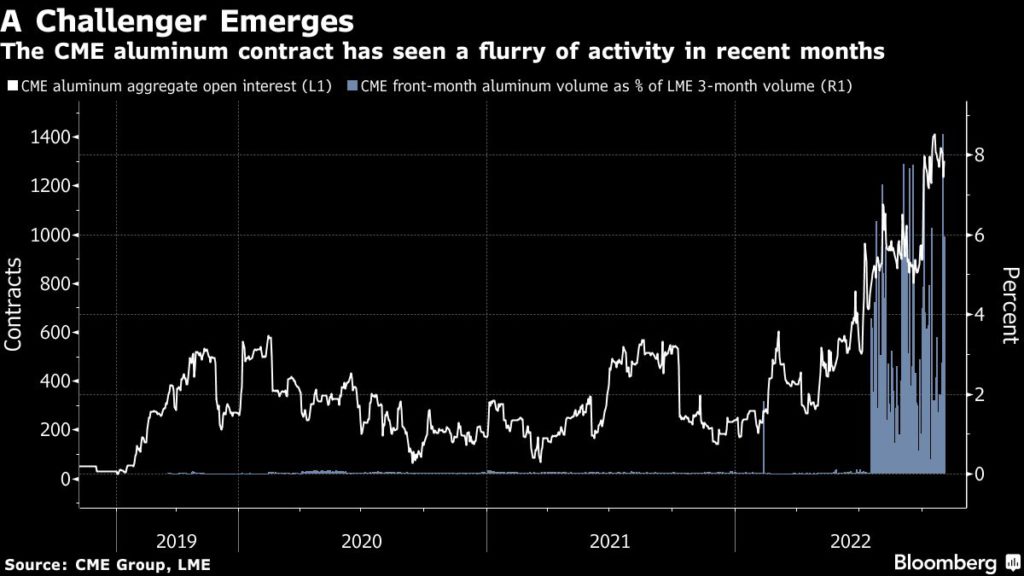Chicago is coming for London’s metal trading after LME stumbles

As the London Metal Exchange wades through the fallout of this year’s nickel crisis, its American rival is gaining ground.
Chicago-based CME Group Inc. has successful copper and precious-metals contracts but has never managed to challenge the LME’s dominance in other industrial metals. This year, it has seen strong growth in both its aluminum and cobalt contracts — aggregate open interest in CME’s Comex aluminum futures contract is up more than 400% since the start of 2022, while open interest in the Comex cobalt contract has risen more than 500%.
CME has been working to capitalize on the LME’s stumbles, offering incentives to traders to boost its aluminum contract, and in July it adjusted the timing of the daily settlement to increase arbitrage opportunities with the LME. At LME Week in London last month, it hosted a drinks party at the same time as the LME chairman’s reception and unveiled a tie-up with LME broker Marex Group to promote its aluminum contract. CME has also hinted at its plans to launch a nickel contract.
In cobalt, a key battery metal, activity in the LME’s longstanding physical contract has ground to a halt, while CME’s cash-settled contract has taken off.
“Liquidity in the cobalt market is almost solely based in the CME,” said Jack Nathan, head of battery metals at Freight Investor Services.

In aluminum, a surge in volumes began in July after CME tweaked the daily settlement period for the contract to line up with the close of trading on the LME, which opened up greater arbitrage opportunities during the most liquid period of trading on the incumbent bourse. It’s also seen an influx of new clients using the contract, with nearly 150 new accounts trading it between May and mid-September.
CME’s aluminum contract remains a minnow compared to the LME’s, but its rapid growth comes at a difficult time for the London exchange. Not only has it incurred the wrath of hedge funds and traders with its decision to cancel billions of dollars in nickel trades after a short squeeze in March, but it is also trying to navigate a schism in the aluminum market about how to handle metal from Russia.
“As a consumer, I’m feeling more and more reluctant against the LME because of all the recent activities that’ve been taking place,” said Andy Massey, vice president of procurement at Bonnell Aluminum, one of the largest independent aluminum extruders in North America.
While about 80% of his trading volume is still in the LME aluminum contract, he said he has been trading more on CME in the past year or so. He has also started offering his customers the option of whether to use CME or LME prices in his physical contracts — something that can be attractive to customers in North America as CME also offers a popular contract to hedge the US physical premium.
The current aluminum futures contract is the Chicago-based exchange’s third attempt to create an aluminum contract. It was launched in 2014 the wake of the “merry-go-round” deals that caused outcry over bottlenecks at LME warehouses. But the contract remained in the doldrums until this year.
Despite this year’s growth, CME’s aluminum contract isn’t about to replace the LME as the global benchmark any time soon. The total open interest in CME aluminum stands at about 30,000 tons, compared with 14 million tons for the LME.
And CME faces a similar dilemma to the LME over Russian metal, which is deliverable against its aluminum contract. Jin Chang, CME global head of metals products, said during the LME Week that the exchange will follow government guidelines when it comes to metals from Russian producers — a stance that could anger aluminum producers that have been lobbying for bans and sanctions.
Meanwhile, open interest in CME’s flagship copper contract has dropped sharply from a peak in 2017, matching a similar decline in the LME copper contract.
(By Yvonne Yue Li, with assistance from Mark Burton and Jack Farchy)
{{ commodity.name }}
{{ post.title }}
{{ post.date }}

Comments